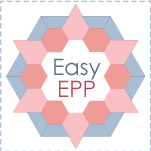Stitched Sunday lesson 2 - backstitch
'
Firstly, if you are not a knotter like me – but a purist – you may like to take a look here to see an alternative to using a knot. Bookmark this new blog whilst you are there, there is going to lots to share including a free pattern from moi.
This week we are learning the most used stitch in basic stitchery designs - backstitch
it is great to outline almost anything, best for text and writing and can be even used for filling.
and here’s how – just in case you don't know..
bring your knotted threaded needle up at A – I like to work from right to left
Go back down at point B and up again at A – note all of these points are exactly on the marked line – not one thread to the side, not even half a thread to the side but exactly on the line.
pull your thread through, firmly but not stretched or distorted
This is the most important step – take your needle back down at point B in the exact same hole as the previous stitch went in. this is a continuous line stitch so we don't want little gaps in the line because you missed the hole – it also means you will have nice even straight lines.
see, exact same hole- give it a little tug to open the hole if you cant get your needle in there..
It is important to use a very sharp needle for this stitch (more on needles later) so that it can be inserted exactly on that line –it may even need to split a thread in the weave to get on the line – a blunter tip will just slide to a natural space in the weave which may not be on the drawn line exactly – these are the finer points of getting a nice backstitch.
length? – well personal choice but it must be even the whole way across a design (well I think it does for the best look). If you have curves in your design this may determine your stitch size - if they are too long you will get jagged curves.
but nice little ones will give you lovely smooth curves.
I generally use a length of about 1/8 inch – 2-3mm
variations include whipped backstitch
with a contrasting thread come up below the stitch, over and down through the top of the next one
go up under one stitch
then over and down through the next one
and there you have it, combine it with other stitches or just use it on its own for a simple stitchery design.
This is your practise piece or page for this week. Download it here. Download Backstitch
here are some more samples snapped around my studio
take a look at some more inspiration on my backstitch pinboard here.
Now, as mentioned, a few notes on needles for your info bank:
there are many but here are a few that I keep in my Needlebook and use in all forms of embroidery
quilting needles are very fine, with a tiny eye the same diameter as the needle shaft and a very small eye - used for hand quilting and larger ones can be used for needleturn appliqué.
Appliqué needles – sharp point, very fine, small eye – need to be fine so as not to make large holes in the side of the applied piece when needleturning.
Crewel needle – universal needle for embroidery various sizes generally 5-10 (note the higher the number the smaller the needle). Sharp point, large long eye – easier for threading. The size of needle is determined by the size of your chosen thread. The thread should feed through the eye easily and the shaft size should make a large enough hole in the fabric for the thread to pass through without wear and tear. I use mostly a #7 or 8 Crewel needle with up to 3 strands of stranded cotton or a perle #12 or 16 type thread.
A Chenille needle is like a very big crewel needle. It has a sharp point and a long large eye. Sizes are bigger –generally 18-22 – used for ribbon embroidery, wool embroidery or larger thicker threads.
A tapestry needle has a rounded blunt point, large long eye and a thicker shaft. Used for embroidery that is done on an even count type fabric like canvas, cross stitch aida cloths etc – a rounded point so your needle slips into the hole rather than splitting the woven canvas or splitting your threads.
Milliner or straw needles – long, even width shafts all the way,sharp point and small eye – used for bullion work – smaller sizes are also good for needleturn appliqué –because the shaft is even diameter for the complete length of the needle the wraps used in bullion style stiches slide down the shaft evenly.
very long, very narrow shafts, very small eyes and sharp points –used for applying beads to projects – the narrow shaft and same width eye allows them to pass through the tiny holes of even the smallest bead. – not very strong and easy to bend because they are so fine.
So my most used needle and the ones I have used in all of our Stitched Sunday projects so far are Crewels…. make sure you have them in your sewing box for great results.
have fun learning and practising a perfect backstitch
hugs for today
Helen
Oh one final note – using a hoop will get you the best and most perfect backstitch- if you are not using one yet, have a try and see the difference…
'

Items 1 to 6 of 8 total